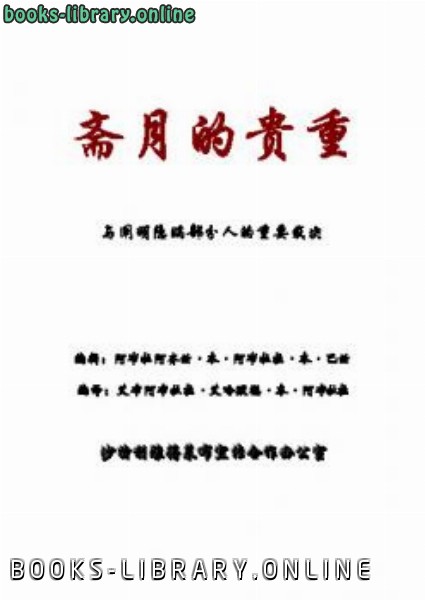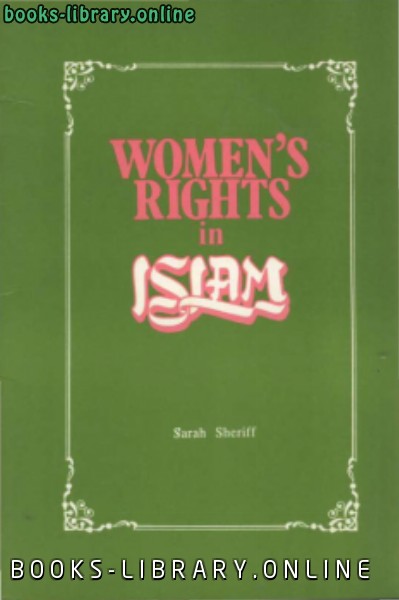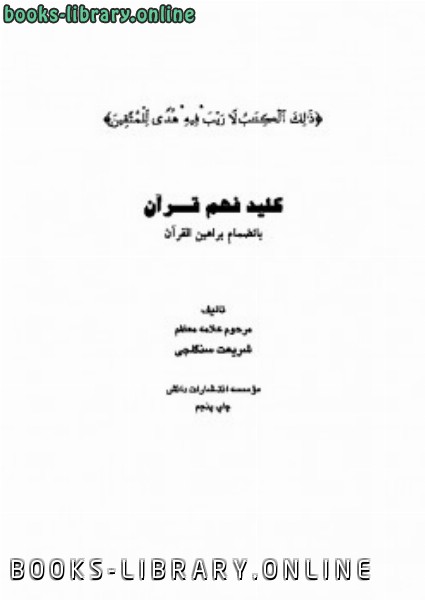كتاب Rules Governing The Criticism Of Hadith
A hadith (pl. ahadith) is composed of two parts: thematn (text) and the isnad (chain of reporters). A text may seem to be logical and reasonable but it needs an authentic isnad with reliable reporters to be acceptable; 'Abdullah b. al-Mubarak (d. 181 AH) is reported to have said, "The isnad is part of the religion: had it not been for the isnad, whoever wished to would have said whatever he liked." During the lifetime of the Prophet (SAS) and after his death, his Companions (Sahabah) used to refer to him when quoting his sayings. The Successors (Tabi'un) followed suit; some of them used to quote the Prophet (SAS) through the Companions while others would omit the intermediate authority - such a hadith was known as mursal (loose). It was found that the missing link between the Successor and the Prophet (SAS) might be one person, i.e. a Companion, or two persons, the extra person being an older Successor who heard the hadith from the Companion. This is an example of how the need for the verification of each isnad arose. Malik (d. 179) said, "The first one to utilise the isnad was Ibn Shihab al-Zuhri" (d. 124 AH). Mustalah al-Hadith and Rijal As time passed, more reporters were involved in eachisnad, and so the situation demanded strict discipline in the acceptance of ahadith; the rules regulating this discipline are known as Mustalah al-Hadith (the Science of Hadith). Mustalah books speak of a number of classes ofhadith in accordance with their status. The following classifications can be made, each of which is explained later: 1. According to the reference to a particular authority, e.g. the Prophet (SAS), a Companion, or a Successor; such ahadith are called marfu' (elevated), mauquf (delayed) and maqtu' (severed) respectively . 2. According to the nature of the chain of reporters, i.e. whether interrupted or uninterrupted, e.g. musnad (supported),muttasil (continuous), munqati'' (broken), mu'allaq (suspended), mu'dal (perplexing) and mursal (loose). 3. According to the number of reporters involved in eachisnad, e.g. mutawatir (consecutive) and ahad (isolated), the latter being divided into gharib (rare), 'aziz (scarce), and mash-hur (widespread) . 4. According to the way in which a saying has been reported such as using the words'an ( - "on the authority of"), haddathana ( - "he narrated to us"), akhbarana ( - "he informed us") or sami'tu ( - "I . An summarised text detailing the rules governing the Criticism of Hadeeth. From its introduction ’A hadith pl. ahadith is composed of two parts: the matn text and the isnad chain of reporters . A text may seem to be logical and reasonable but it needs an authentic isnad with reliable reporters to be acceptable ’Abdullah b. alMubarak d. 181 AH is reported to have said, The isnad is part of the religion: had it not been for the isnad, whoever wished to would have said whatever he liked. During the lifetime of the Prophet SAS and after his death, his Companions Sahabah used to refer to him when quoting his sayings. The Successors Tabi’un followed suit some of them used to quote the Prophet SAS through the Companions while others would omit the intermediate authority such a hadith was known as mursal loose . It was found that the missing link between the Successor and the Prophet SAS might be one person, i.e. a Companion, or two persons, the extra person being an older Successor who heard the hadith from the Companion.’محمود الطحان - الدكتور محمود بن أحمد الطحان هو أبو حفص محمود بن أحمد الطحان الحلبي النعيمي .❰ له مجموعة من الإنجازات والمؤلفات أبرزها ❞ تيسير مصطلح الحديث ❝ ❞ أصول التخريج ودراسة الأسانيد ❝ ❞ أصول التخريج ودراسة الأسانيد (ط المعارف) ❝ ❞ تيسير مصطلح الحديث ط الهدى ❝ ❞ الحافظ الخطيب البغدادي وأثره في علوم الحديث ❝ ❞ Пособие по терминологии хадисов ❝ ❞ Rules Governing The Criticism Of Hadith ❝ الناشرين : ❞ موقع دار الإسلام ❝ ❞ مكتبة المعارف للنشر والتوزيع ❝ ❞ مركز الهدي للدراسات ❝ ❱
من كتب إسلامية بلغات أخرى - مكتبة كتب إسلامية.

قراءة كتاب Rules Governing The Criticism Of Hadith أونلاين
معلومات عن كتاب Rules Governing The Criticism Of Hadith:
text may seem to be logical and reasonable but it needs an authentic isnad with reliable reporters to be
acceptable; 'Abdullah b. al-Mubarak (d. 181 AH) is reported to have said,
"The isnad is part of the religion: had it not been for the isnad, whoever wished to would have said
whatever he liked."
During the lifetime of the Prophet (SAS) and after his death, his Companions (Sahabah) used to refer
to him when quoting his sayings. The Successors (Tabi'un) followed suit; some of them used to quote
the Prophet (SAS) through the Companions while others would omit the intermediate authority - such
a hadith was known as mursal (loose). It was found that the missing link between the Successor and
the Prophet (SAS) might be one person, i.e. a Companion, or two persons, the extra person being an
older Successor who heard the hadith from the Companion. This is an example of how the need for
the verification of each isnad arose. Malik (d. 179) said,
"The first one to utilise the isnad was Ibn Shihab al-Zuhri" (d. 124 AH).
Mustalah al-Hadith and Rijal
As time passed, more reporters were involved in eachisnad, and so the situation demanded strict
discipline in the acceptance of ahadith; the rules regulating this discipline are known as Mustalah
al-Hadith (the Science of Hadith).
Mustalah books speak of a number of classes ofhadith in accordance with their status. The following
classifications can be made, each of which is explained later:
1. According to the reference to a particular authority, e.g. the Prophet (SAS), a Companion, or a
Successor; such ahadith are called marfu' (elevated), mauquf (delayed) and maqtu' (severed)
respectively .
2. According to the nature of the chain of reporters, i.e. whether interrupted or uninterrupted, e.g.
musnad (supported),muttasil (continuous), munqati'' (broken), mu'allaq (suspended), mu'dal
(perplexing) and mursal (loose).
3. According to the number of reporters involved in eachisnad, e.g. mutawatir (consecutive) and ahad
(isolated), the latter being divided into gharib (rare), 'aziz (scarce), and mash-hur (widespread) .
4. According to the way in which a saying has been reported such as using the words'an ( - "on the
authority of"), haddathana ( - "he narrated to us"), akhbarana ( - "he informed us") or sami'tu ( - "I
.
An summarised text detailing the rules governing the Criticism of Hadeeth. From its introduction ’A hadith pl. ahadith is composed of two parts: the matn text and the isnad chain of reporters . A text may seem to be logical and reasonable but it needs an authentic isnad with reliable reporters to be acceptable ’Abdullah b. alMubarak d. 181 AH is reported to have said, The isnad is part of the religion: had it not been for the isnad, whoever wished to would have said whatever he liked. During the lifetime of the Prophet SAS and after his death, his Companions Sahabah used to refer to him when quoting his sayings. The Successors Tabi’un followed suit some of them used to quote the Prophet SAS through the Companions while others would omit the intermediate authority such a hadith was known as mursal loose . It was found that the missing link between the Successor and the Prophet SAS might be one person, i.e. a Companion, or two persons, the extra person being an older Successor who heard the hadith from the Companion.’
للكاتب/المؤلف : محمود الطحان .
دار النشر : .
عدد مرات التحميل : 4367 مرّة / مرات.
تم اضافته في : الثلاثاء , 26 مارس 2019م.
حجم الكتاب عند التحميل : 86.4 كيلوبايت .
تعليقات ومناقشات حول الكتاب:
A hadith (pl. ahadith) is composed of two parts: thematn (text) and the isnad (chain of reporters). A
text may seem to be logical and reasonable but it needs an authentic isnad with reliable reporters to be
acceptable; 'Abdullah b. al-Mubarak (d. 181 AH) is reported to have said,
"The isnad is part of the religion: had it not been for the isnad, whoever wished to would have said
whatever he liked."
During the lifetime of the Prophet (SAS) and after his death, his Companions (Sahabah) used to refer
to him when quoting his sayings. The Successors (Tabi'un) followed suit; some of them used to quote
the Prophet (SAS) through the Companions while others would omit the intermediate authority - such
a hadith was known as mursal (loose). It was found that the missing link between the Successor and
the Prophet (SAS) might be one person, i.e. a Companion, or two persons, the extra person being an
older Successor who heard the hadith from the Companion. This is an example of how the need for
the verification of each isnad arose. Malik (d. 179) said,
"The first one to utilise the isnad was Ibn Shihab al-Zuhri" (d. 124 AH).
Mustalah al-Hadith and Rijal
As time passed, more reporters were involved in eachisnad, and so the situation demanded strict
discipline in the acceptance of ahadith; the rules regulating this discipline are known as Mustalah
al-Hadith (the Science of Hadith).
Mustalah books speak of a number of classes ofhadith in accordance with their status. The following
classifications can be made, each of which is explained later:
1. According to the reference to a particular authority, e.g. the Prophet (SAS), a Companion, or a
Successor; such ahadith are called marfu' (elevated), mauquf (delayed) and maqtu' (severed)
respectively .
2. According to the nature of the chain of reporters, i.e. whether interrupted or uninterrupted, e.g.
musnad (supported),muttasil (continuous), munqati'' (broken), mu'allaq (suspended), mu'dal
(perplexing) and mursal (loose).
3. According to the number of reporters involved in eachisnad, e.g. mutawatir (consecutive) and ahad
(isolated), the latter being divided into gharib (rare), 'aziz (scarce), and mash-hur (widespread) .
4. According to the way in which a saying has been reported such as using the words'an ( - "on the
authority of"), haddathana ( - "he narrated to us"), akhbarana ( - "he informed us") or sami'tu ( - "I
heard"). In this category falls the discussion about mudallas (concealed) and musalsal (connected)
ahadith.
5. According to the nature of the matn and isnad, e.g. an addition by a reliable reporter, known as
ziyadah thiqa, or opposition by a lesser authority to a more reliable one, known as shadh (aloof). In
some cases a text containing a vulgar expression, unreasonable remark or an apparently erroneous
statement is rejected by the traditionists outright without consideration of the isnad. Such a hadith is
known as munkar (denounced). If an expression or statement is proved to be an addition by a reporter
to the text, it is declared as mudraj (added).
6. According to a hidden defect found in the isnad or text of a hadith. Although it could be included
in some of the previous categories, hadith mu'allal (defective hadith) is worthy to be explained
separately. The defect can be caused in many ways; e.g. two types ofhadith mu'allal are known as
maqlub (overturned) and mudtarib (shaky).
7. According to the reliability and memory of the reporters; the final verdict on ahadith depends
mainly on this classification: verdicts such as sahih (sound), hasan (good), da'if (weak) and maudu'
(fabricated) rest mainly upon the nature of the reporters in the isnad.
Musatalah al-hadith is strongly associated with Rijal al-hadith (the study of the reporters ofhadith). In
scrutinising the reporters of ahadith, authenticating or disparaging remarks made by recognised
experts, whether among the Successors or those after them, were found to be of great help. The
earliest remarks cited in the books ofRijal go back to a host of Successors and those after during the
first three centuries of Islam. A list of such names is provided by the author in his thesis, Criticism of
Hadith among Muslims with reference to Sunan lbn Maja, at the end of chapters IV, V and VI.
Among the earliest available works in this field are Tarikh of Ibn Ma'in (d. 233),Tabaqat of Khalifa b.
Khayyat (d. 240), Tarikh of Bukhari (d. 256), Kitab al-Jarh wa al-Ta'dil of Ibn Abi Hatim (d. 327) and
Tabaqat of Muhammad b. Sa'd al-Zuhri (d. 320).
A number of traditionists made efforts specifically for the gathering of information about the reporters
of the five famous collections of hadith: those ofBukhari (d. 256), Muslim (d. 261), AbuDawud (d.
275), Tirmidhi (d. 279) and Nasa'i (d. 303), giving authenticating and disparaging remarks in detail.
The first major such work to include also the reporters ofIbn Maja (d. 273) is the ten-volume
collection of al-Hafiz 'Abd al-Ghani al-Maqdisi (d. 600), known as Al-Kamal fi Asma' al-Rijal. Later,
Jamal al-Din 'Abd al-Hajjaj Yusuf b. 'Abd al-Rahman al-Mizzi (d. 742) prepared an edited and
abridged version of this work, but made a number of additions and punctuation of the names by
names, places and countries of origin of the reporters. He named itTahdhib al-Kamal fi Asma' al-Rijal
and produced it in twelve volumes. Further, one of al-Mizzi's gifted pupils, Shams al-Din Abu
'Abdullah Muhammad b. Ahmad b. 'Uthman b. Qa'imaz al-Dhahabi (d. 748),summarised his shaikh's
work and produced two abridgements: a longer one calledTadhhib al-Tahdhib and a shorter one
called Al-Kashif fi Asma' Rijal al-Kutub al-Sitta.
A similar effort with the work of Mizzi was made by Ibn Hajar (d. 852), who prepared a lengthy but
abridged version, with about one-third of the original omitted, entitled Tahdhib al-Tahdhib in twelve
shorter volumes. Later, he abridged this further to a relatively humble two-volume work called Taqrib
al-Tahdhib.
The work of Dhahabi was not left unedited; Khazraji (Saif al-Din Ahmad b. 'Abdullah, d. after 923)
summarised it and also made valuable additions, producing his Khulasa.
A number of similar works deal with either trustworthy authorities, e.g. Kitab al-Thiqat by 'Ijli (d.
261) and Tadhkira al-Huffaz by Dhahabi, or with disparaged authorities, e.g. Kitab al-Du'afa' wa
al-Matrukin by Nasa'i and Kitab al-Majruhin by Muhammad b. Hibban al-Busti (d. 354).
Two more works in this field, which include a large number of reporters, both authenticated and
disparaged, are Mizan al-l'tidal of Dhahabi and Lisan al-Mizan of Ibn Hajar.
An summarised text detailing the rules governing the Criticism of Hadeeth. From its introduction ’A hadith pl. ahadith is composed of two parts: the matn text and the isnad chain of reporters . A text may seem to be logical and reasonable but it needs an authentic isnad with reliable reporters to be acceptable ’Abdullah b. alMubarak d. 181 AH is reported to have said, The isnad is part of the religion: had it not been for the isnad, whoever wished to would have said whatever he liked. During the lifetime of the Prophet SAS and after his death, his Companions Sahabah used to refer to him when quoting his sayings. The Successors Tabi’un followed suit some of them used to quote the Prophet SAS through the Companions while others would omit the intermediate authority such a hadith was known as mursal loose . It was found that the missing link between the Successor and the Prophet SAS might be one person, i.e. a Companion, or two persons, the extra person being an older Successor who heard the hadith from the Companion.’
 مهلاً !
مهلاً !قبل تحميل الكتاب .. يجب ان يتوفر لديكم برنامج تشغيل وقراءة ملفات pdf
يمكن تحميلة من هنا 'تحميل البرنامج'

نوع الكتاب : pdf.
اذا اعجبك الكتاب فضلاً اضغط على أعجبني و يمكنك تحميله من هنا:


كتب اخرى في كتب إسلامية بلغات أخرى
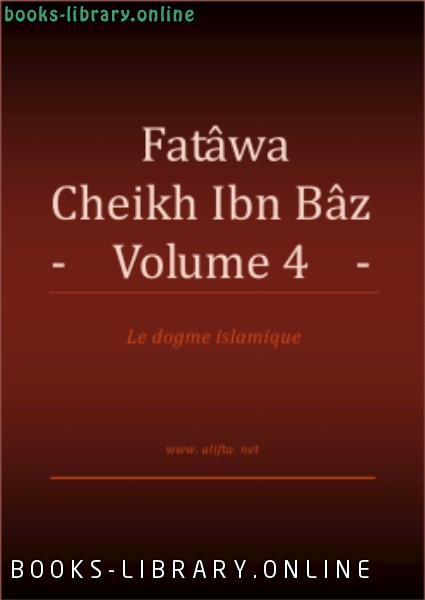
Compilation des Fatwas de Cheikh Ibn Baz Volume 4 PDF
قراءة و تحميل كتاب Compilation des Fatwas de Cheikh Ibn Baz Volume 4 PDF مجانا
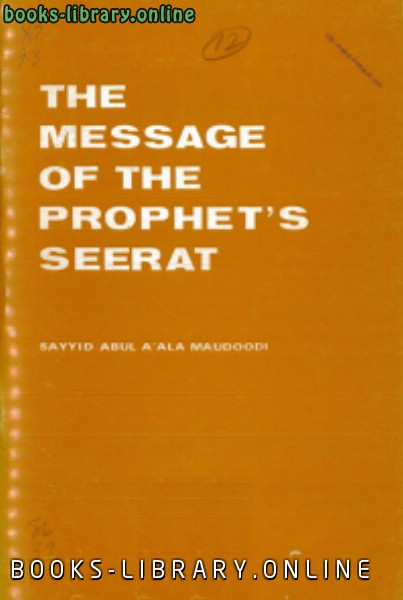
The Message of The Prophets Seerat PDF
قراءة و تحميل كتاب The Message of The Prophets Seerat PDF مجانا



